The Intel Haswell Refresh Review: Core i7-4790, i5-4690 and i3-4360 Tested
by Ian Cutress on May 11, 2014 3:01 AM ESTFor our discrete GPU benchmarks, we have split them up into the different GPU configurations we have tested. We have access to both MSI GTX 770 Lightning GPUs and ASUS reference HD 7970s, for SLI and Crossfire respectively. These tests are all run at 1080p and maximum settings, reporting the average and minimum frame rates.
dGPU Benchmarks: 2x MSI GTX770 Lightning
F1 2013


Despite the lack of scaling, moving to dual GPU puts a larger rift between the i3 and the other CPUs for average FPS in 2013.
Bioshock Infinite

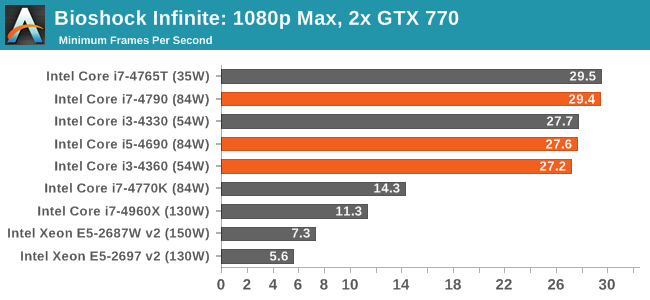
Tomb Raider
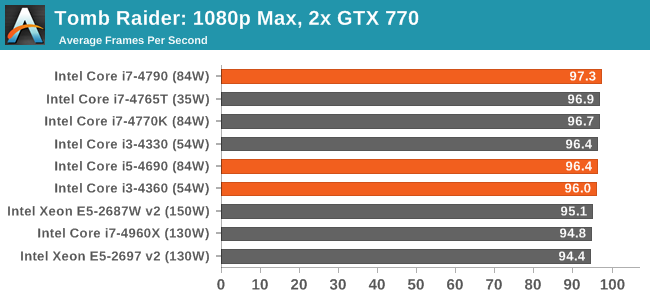
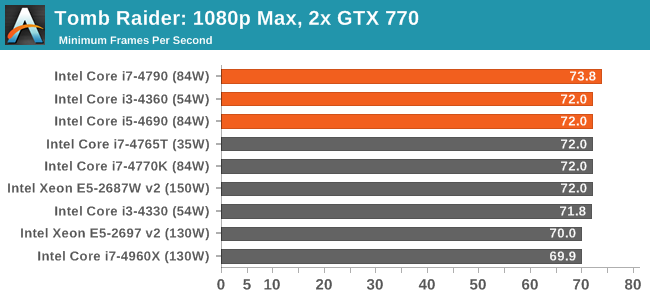
Sleeping Dogs
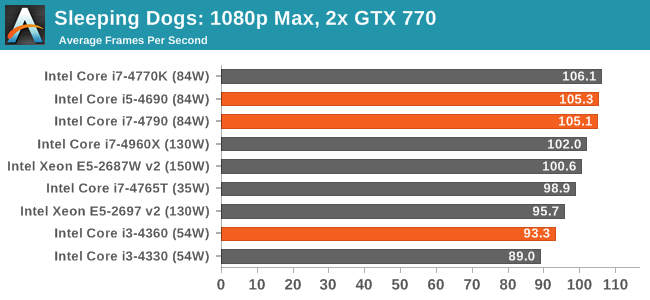
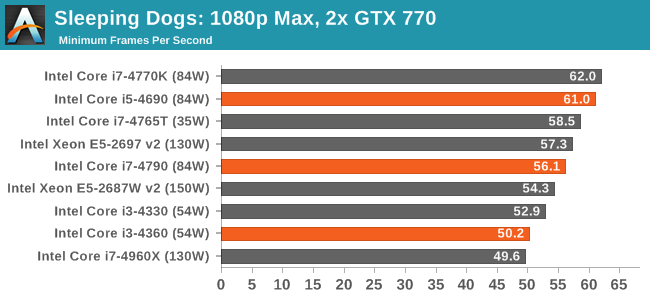
While average FPS takes a ~10% drop from i3 to i5, the same 10 FPS drop is seen in the minimum frame rates but this equates more to a ~20% decline.
Company of Heroes 2
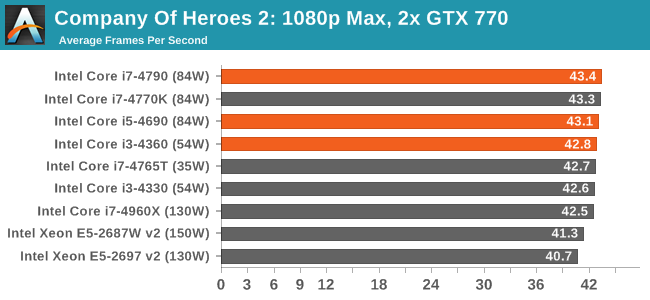
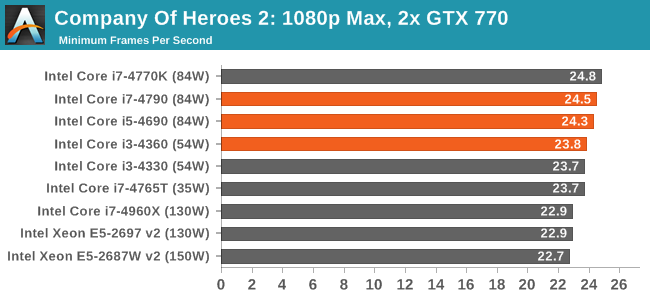
Battlefield 4
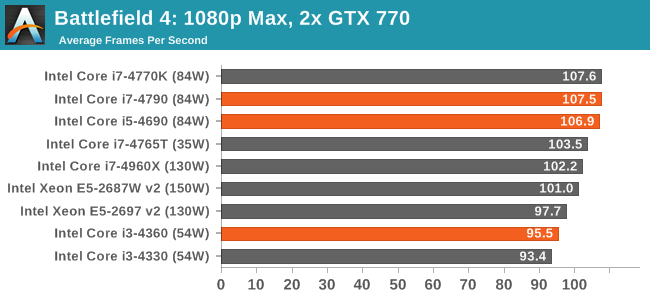
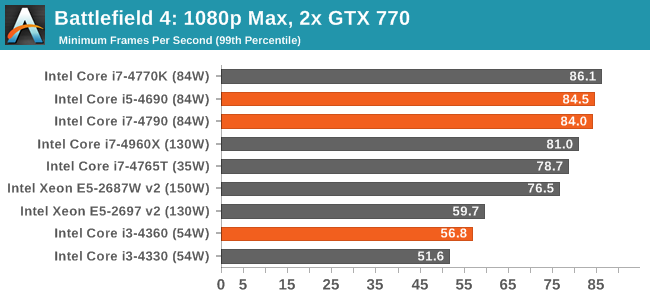
When you start adding the GPU horsepower, the i3 core count becomes a hindrance in minimum FPS values for BF4.










130 Comments
View All Comments
stephenbrooks - Saturday, May 24, 2014 - link
I guess in the event that desktops die, I could attach my two 23" screens, keyboard and mouse to a laptop dock instead, because that's more futuristic or something.mikato - Thursday, May 15, 2014 - link
"the limiting factor is the technology between the keyboard and the monitor: the user"Uhh, the user isn't between the keyboard and monitor. The user is on the end of a branch, past the keyboard. Maybe in the future... :)
jayshank7 - Thursday, May 15, 2014 - link
I bought 4770K 2 months back so won't be getting anything before 2016 to be honest.. i may build broadwell based i5 system but my main 4770K based rig would be here with 3 x 280X Toxic for those years..HardwareDufus - Sunday, May 18, 2014 - link
Looking forward to a Broadwell based I7-5790K with IrisPro (HD5200+)Krysto - Wednesday, May 21, 2014 - link
The only reason there's even a "Haswell Refresh" is because Intel blew it with Broadwell, and got delayed by a whole 6 months. In 2015 they will have most of their process advantage, and will be only 6 months ahead of TSMC, once it gets FinFET at 16nm, compared to IVB/Haswell/Silvermont where it had a generation/node and a half advantage.Be Careful - Friday, May 30, 2014 - link
Hey technology nuts I would like you to read this:http://www.jimstonefreelance.com/corevpro.html
deruberhanyok - Monday, June 2, 2014 - link
I might be late to the party, but, on page 9, the bioshock infinite benchmark charts - is the second one mislabeled? The minimum frame rates? It seems to be.duttasanjiv - Thursday, November 13, 2014 - link
Thx for the much elaborate review.I was looking for the Pure CPU performance of i5 4590 in Video encoding, and it unfortunately did not reveal much of the testing procedure. Kindly let us know-
1) What was the Handbrake source(UHD or DVD) & target (Full HD /half HD) frame size ?
2) What was the encoding speed settings (medium? slow?)
3) What was the CRF/ CQF used?
Most imnportantly (for me atleast :-) ) was a comparison in visible quality difference with pure CPU vs Haswell refresh applied. I heard that there is minor quality compromise with Haswell? Did they improve it with Haswell refresh??
GGuess - Saturday, December 6, 2014 - link
There should be a line of discussion of why haven't CPU speeds increased in the past 5years in a significant way. My 5yr old Intel I7 is a 4 core at 3GHz. The ones discussed here are only 6 or 8 cores and run stock in the mid-3 to 4GHz range. So over 5yrs, the CPU capability has not grown 2 to 3times faster, and that only applies to applications that can use the extra cores and hyper-threading. The usual rule we work to is that people won't even notice a 50% speed increase. It has to be 2 to 3 times before it is noticed. Previously, a 3year refresh of a computer resulted in a 5 to 10x computer speed increase.With the current barely noticeable 2x, why bother with the trouble of an upgrade? No wonder Intel's and AMD's sales figures are failing to grow.
johnny_boy - Friday, February 27, 2015 - link
Why are all the AMD chips APUs? Why not throw at least one top-end FX processor into the mix, like the very common FX-8350 which costs about as much as a 4360.